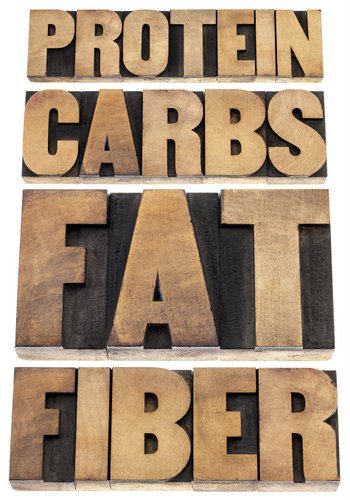While discussing information on fitness and nutrition, one of the topics continue to recur – Macronutrients. Most of us are aware of the basics and that Macronutrients represent large organic (made up of carbon element) molecules that fall within three categories: protein, fats and carbohydrates. To sustain life, we need macronutrients in order to grow, repair and maintain our bodies.
The word macro, in front of nutrient, indicates that these molecules are required in large amounts in our diet. Whether you are trying to gain muscle, lose fat or simply maintain a certain lifestyle, the ratios of your consumed macros play a noteworthy role.
The question then arises regarding specific macro ratios and the ones best for you? This is not a simple topic, and will be discussed in the next series of articles. In order to begin any form of planning, we need to know our goals for fitness and nutrition. Since we all different, our goals will likely reflect that. Based on the goals, you will be able to determine whether you even need to count macro ratios, or simply not bother with such details and just portion your meals.
Related Article: Calories: Energy vs. Nutrients
Why do we need Macronutrients?
 The saying, “you are what you eat” explains this topic well. Human body is made up of: 17% Fat, 17% Protein, 5% Carbohydrates and majority Water (60%), trace elements make up the leftover numbers. The body is continuously maintaining itself through building and repairing molecules while eliminating old ones. In order to accomplish all these life sustaining reactions, the body needs raw materials – which are macro and micro nutrients. Micros will be discussed in later posts and are predominantly used to move reactions forward. Macros on the other hand, are the building blocks that molecules are made of including:
The saying, “you are what you eat” explains this topic well. Human body is made up of: 17% Fat, 17% Protein, 5% Carbohydrates and majority Water (60%), trace elements make up the leftover numbers. The body is continuously maintaining itself through building and repairing molecules while eliminating old ones. In order to accomplish all these life sustaining reactions, the body needs raw materials – which are macro and micro nutrients. Micros will be discussed in later posts and are predominantly used to move reactions forward. Macros on the other hand, are the building blocks that molecules are made of including:
Dietary protein – provides amino acids – including essential amino acids that body can’t create and must obtain from diet. Amino acids are the building platforms for many compounds including various types of proteins, enzymes, hormones and antibodies. Proteins can also be used as energy and converted to fats and carbohydrates. If your goal is to gain muscle, you need to consume protein.
Dietary Fats – provide fatty acids – including essential fatty acids that must be obtained from diet. Fatty acids are often found in our fat cells and are best form of energy; which is available on demand. Fatty acids are important in making hormones and play a major role in structure and function of cell membrane.
Dietary Carbohydrates – provide glucose – important source of energy. Although the body is only 5% carbohydrate molecules, these are used as the major energy source, specially by the brain. Glucose metabolism is a highly regulated process and essential for our growth and development. For this reason alone, you should not skim on your Carbs!
Best food to meet your Macronutrients?
Carbohydrates – most abundant biomolecule on Earth and a dietary staple in most parts of the world. Best foods to eat are whole fruits, vegetables and whole grains. Focus on fiber rich carbohydrates for the benefits of fullness, digestive health and calorie control. When limiting your carbs, focus on limiting processed carbs, like breads, cakes and the like.
Protein – focus on lean proteins here. You are trying to meet you amino acid – Nitrogen (N) – needs. Lean meats, diary products such as milk, yogurt and eggs will provide the necessary complete amino acid profile for muscle building. Along with increased metabolism, feeling of fullness and strength.
Fats – best sources are plant based and marine life. Nuts, seeds, olives, avocado provide the benefits of fiber as well as essential fatty acids. Fish is also a great source for essential fatty acids. Fats contain more calories per gram then either carbs or protein. It’s best to watch your serving size if your goal is weight loss.
Macronutrient Ratio Diets
Many individuals find themselves questioning, if they meet their macro ratios. Macro Ratio Diets are goal specific. They are specific to your body type, training and desired body composition. Meeting basic Macro’s to maintain a healthy lifestyle is a simpler method. A sensible diet of whole foods like fruits, vegetables, nuts and lean meats – as mentioned above – will get you there. Macro adjustment diets can get complicated.
For example, body transformations are more complex as you are attempting to establish a new baseline; usually with greater lean body mass and lower body fat. High protein diet will need to be essential in order to generate more muscle tissue. Depending on your training program and energy pathway demands – your carbohydrate ratio may also need to be increased. You can learn more about training specific energy systems in our training Stronger Leaner Faster Book. Macronutrients, amongst other sound nutrition advise is covered in greater detail in our The No-Diet Book.






